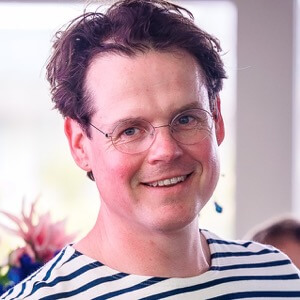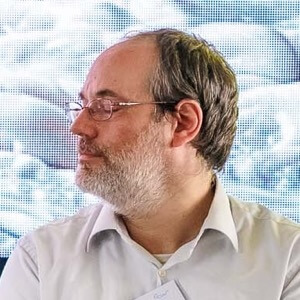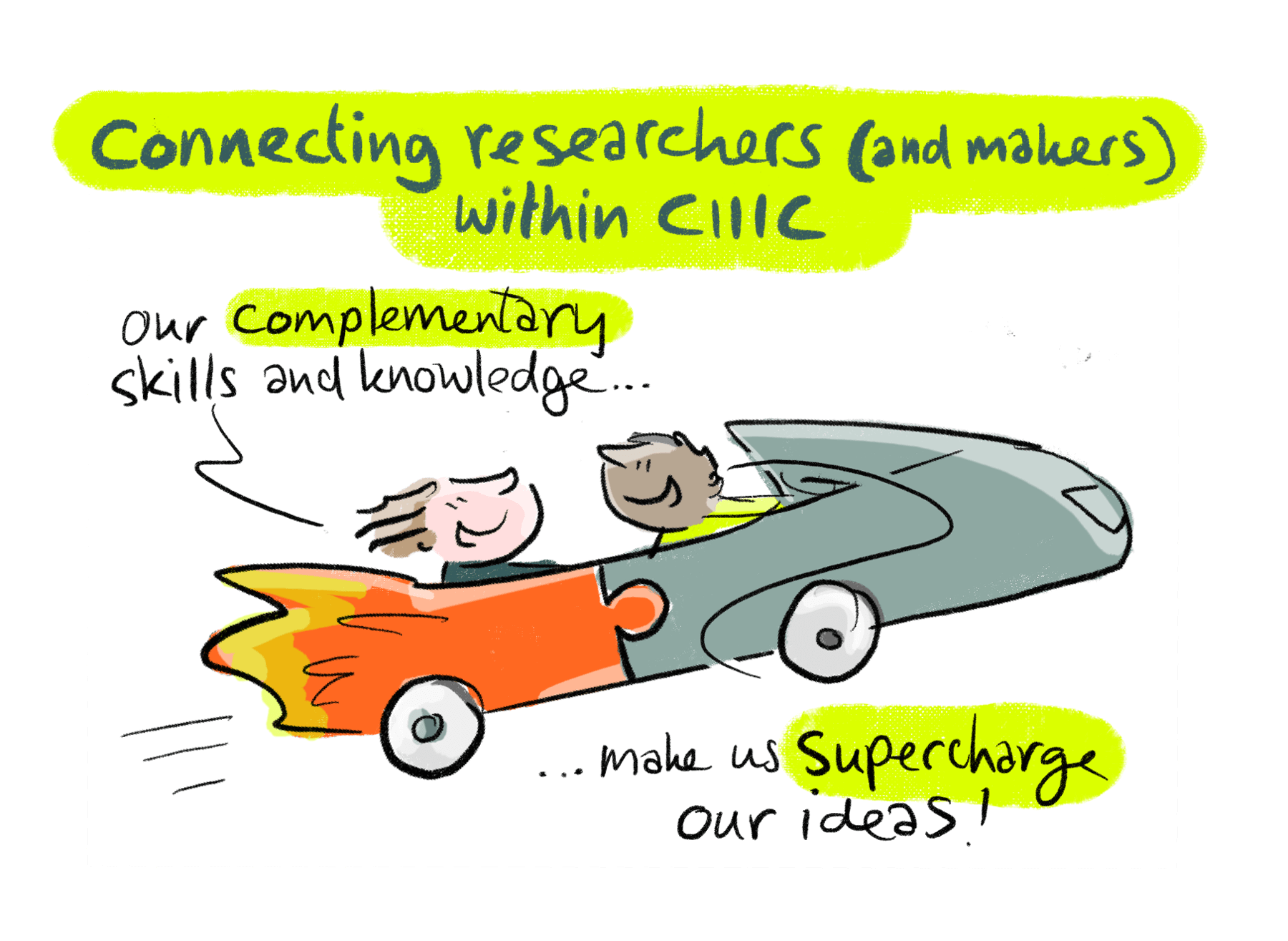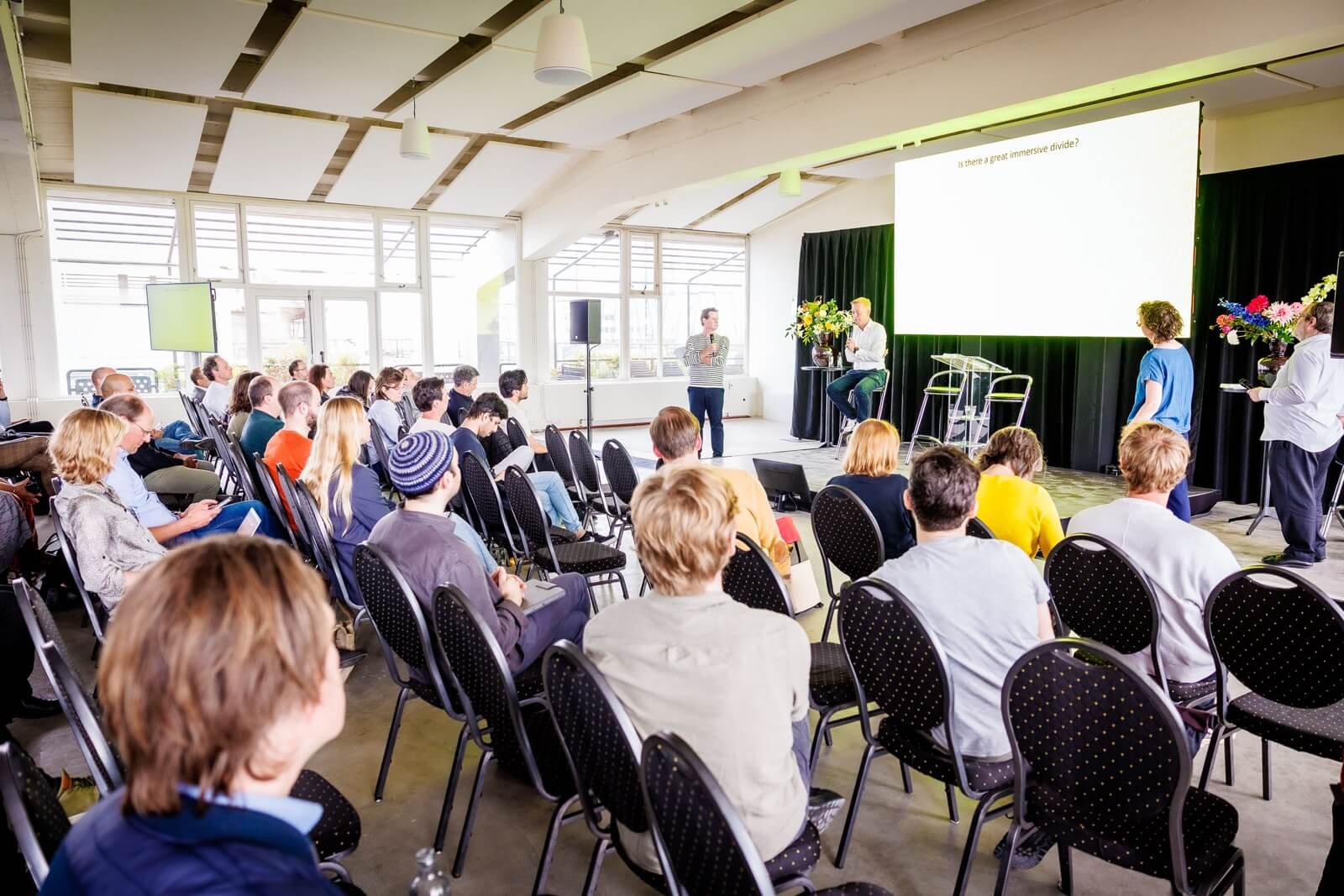2B: Connecting researchers (and makers) within CIIIC

This session focused on the role of researchers in the CIIIC programme, with specific attention to two upcoming funding calls that aim to connect research institutions, makers, and public or private sector partners in the field of immersive experiences (IX).




The presentations and discussion offered a practical introduction to the objectives, scope, and requirements of these calls, alongside space for open questions and concerns from the audience.
Presenters included Isjah Koppejan (NWO/Regieorgaan SIA), Gjalt Loots (TNO), and moderator Servaz van Berkum. The session also featured input from audience members, including researchers, creative professionals, and institutional representatives.
Purpose of the Session
- To introduce and clarify the objectives of two new funding opportunities within the CIIIC programme: the START Call and the KERN Call.
- To explore how researchers and research institutions can meaningfully contribute to the development and evaluation of immersive technologies.
- To address practical questions regarding eligibility, consortium composition, co-financing, thematic scope, and proposal assessment.
- To surface research gaps and discuss how calls are designed to support applied, practice-based research rather than fundamental R&D.

Illustration by Suus van den Akker
Key Funding Opportunities
1. START Call (Opening Summer 2025)
- Budget: €1 million total, ~20 projects expected to be funded.
- Grant size: €50,000 per project.
- Duration: 12 months.
- Focus: Exploratory and practice-based research into the effectiveness of immersive experiences.
- Consortium requirement: At least 1 higher education or research institution + 2 SMEs (freelancers count as SMEs).
- Co-financing: 50% (can be in-kind).
- Selection: First come, first served basis.
- Target: Early-phase testing and development projects with clearly formulated research questions and sectoral relevance.
2. KERN Call (Opening Autumn 2025)
- Budget: €3 million total, ~10 projects expected to be funded.
- Grant size: €300,000 per project.
- Duration: 18–24 months.
- Focus: More in-depth, applied research that improves the societal impact of IX.
- Consortium requirement: 1 higher education or research institution + 2 SMEs or 1 public organization + SMEs.
- Co-financing: 100%.
- Selection: Competitive peer-reviewed evaluation (not first-come-first-served).
- Target: Research with broader implementation potential across sectors such as health, education and culture.
Themes and Research Gaps
Isjah invited the audience to reflect on current research gaps in their fields. Topics included:
- Use of mass media like TV as a vehicle for AR/IX experiences.
- Lack of user experience feedback for early-stage XR prototypes.
- Validity of immersive assessments for testing attitudes or behavioral responses.
- Automatic transformation of built environment data into VR models.
- Psychological and media effects of VR and XR (e.g., beyond "awkwardness").
These examples underscored that the most pressing knowledge gaps are not in core technology development, but in how IX is implemented, evaluated, and made effective in specific contexts — what Isjah framed as "the left quadrant" of CIIIC's innovation agenda (applicability, impact, and responsible use).

Practical Clarifications
- Themes: Both calls are intentionally broad to allow applicants to define relevant sectoral or societal contexts — from healthcare to education to media.
- Makers: Can be co-applicants and receive funding if their contribution is essential to the research, including for building prototypes or tools used in the project.
- Budget Split: At least 50% of the grant must go to the research institution.
- Sector Inquiry: Proposals are expected to reference real needs. CIIIC's prior consultation efforts will be formalized into an innovation agenda to support applicants.
- Public Values: Although public values (e.g. inclusivity, accessibility, ecological sustainability) are central, more detailed guidance is expected in the finalized call documents.
- Follow-up Calls: Future calls (e.g. PRO Call, Learning Community Call) are planned for 2026–2027, potentially supporting longer-term projects such as PhDs.
- Overlap with other funding: Projects cannot be doubly funded by overlapping grants (e.g. from RVO). Match funding must come from private or in-kind sources.
Key Questions and Concerns from Participants
- The balance between societal application vs. core technological innovation in IX.
- The administrative burden and feasibility of smaller grants like START (€50k).
- Opportunities for matchmaking to form consortia (currently under consideration).
- Whether previous tools or results from other calls (e.g. RVO-funded) can be used in new consortia (answer: not as match funding, but possibly in-kind if not double-funded).
- Concerns about vagueness in terms like "public values" and "sector inquiry" — more clarity was requested and is promised in the full call texts.
Conclusion
The session gave a detailed preview of two upcoming funding instruments aimed at fostering collaboration between research institutions, makers, and societal partners to develop and evaluate immersive experiences. While some questions remain open pending the publication of full call texts, the broad intent is clear: to fund concrete, hands-on research that strengthens the societal relevance and responsible use of IX.
Attendees were encouraged to consult the CIIIC website for updates and further materials, including the innovation agenda and upcoming matchmaking activities.